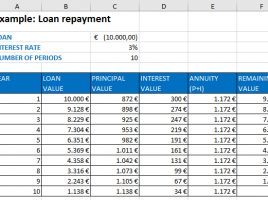
LET function
The LET command exists in several programming languages and is used to assign values to variables. In a similar way in Excel, you can declare one or more variables, assign values to them, and define the expression in which they are used using the LET function. This is especially beneficial when there are parts within the formula that are repeated several times. The LET function, in addition to shortening the formula, also significantly affects the performance …




